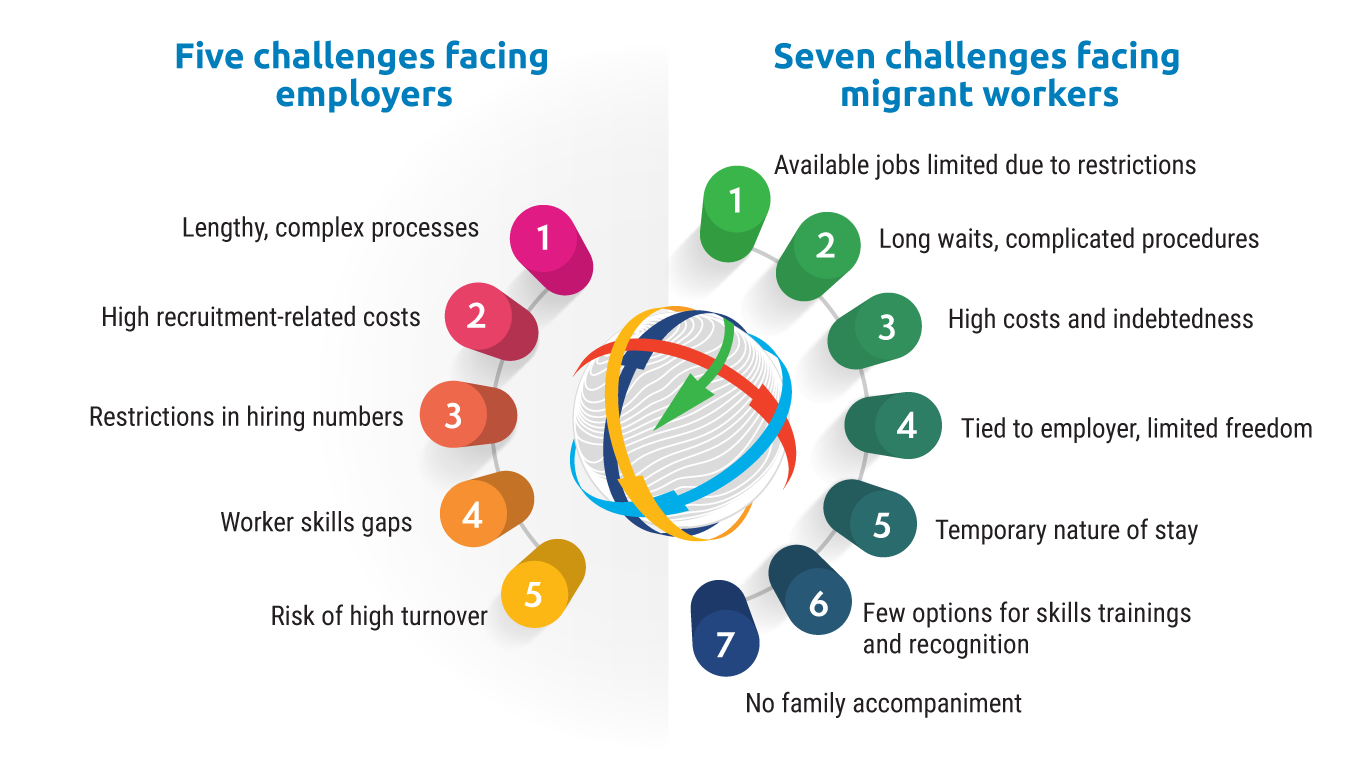GLOBAL COMPACT FOR MIGRATION OBJECTIVES 2, 5, 6, 12, 18
Entrenched inequity lies at the heart of the factors driving international migration in Asia and the Pacific. Disasters, the adverse effects of climate change and environmental degradation are rarely the sole drivers of international migration, but they can exacerbate inequalities and compel people to move. The Pacific’s small island States are especially vulnerable, with far-reaching consequences for human mobility. It is our collective responsibility to minimize these migration drivers.
The availability and flexibility of regular migration routes must be expanded and diversified. While the region offers several routes for labour mobility and decent work, these pathways remain limited and hard to access. They are also highly gendered. Regular pathways that are made available on human rights and humanitarian grounds are limited in much of the region. Where they exist, such pathways allow migrants in vulnerable human rights situations to enter and stay in destination countries with at least temporary regular status.
Great strides towards ensuring decent work for migrants have been made, but challenges remain. Measures such as lowering visa fees and bilateral agreements are improving mobility and skill development. Temporary labour migration schemes often benefit destination economies but fail to uphold migrants’ human rights, including the right to decent work, family life, adequate housing and health care. Rights-based policies, robust protection mechanisms and support networks are needed.

Fair and ethical recruitment is crucial. Global frameworks highlight this priority, and some countries have updated laws. Worker-paid recruitment fees have been banned in Indonesia and Mongolia. Bangladesh has strengthened oversight of private recruitment agencies. Bilateral labour migration memorandums of understanding increasingly include provisions for ethical recruitment and digitized processes. There has been progress in some instances of securing remedy for exploitative recruitment costs paid by Asia-Pacific migrant workers.
Several challenges faced by migrant workers require urgent attention:
- Insufficient gender-responsive laws and policies. Women migrant workers have less access to skill development and recognition processes due to biased policies and their concentration in low-wage jobs, especially domestic and care work.
- Low wages, lack of social protection and poor working conditions, particularly for migrant workers whose status is irregular.
- Restricted access to full human rights, such as freedom of association and collective bargaining, and ongoing recruitment malpractices.
Work is ongoing to ensure all migrants receive safe reception on arrival.
- Basic, accessible information, including on their rights, in a language migrants understand is crucial. Due process must be guaranteed to ensure appropriate referrals for migrants who may be at risk.
- Many countries in Asia and Pacific do not have comprehensive child-sensitive procedures for identifying and assessing children affected by migration.
- Progress has been made through regional and bilateral cooperation to enhance pathways and rights protections for migrants.
- Association of Southeast Asian Nations (ASEAN) Member States’ Mutual Recognition Agreements facilitate mobility – currently in place for eight occupations.
- Global Skills Partnerships in the Pacific are using training to address skill shortages in both origin and destination countries.
- The Pacific Island Forum’s Arrangement on Labour Mobility supports cooperation between members to share information, improve access to labour markets and promote economic outcomes related to labour mobility programmes.
- Interregional trade union cooperation on labour migration helps support rights protection.
This is progress on which the region must build.

